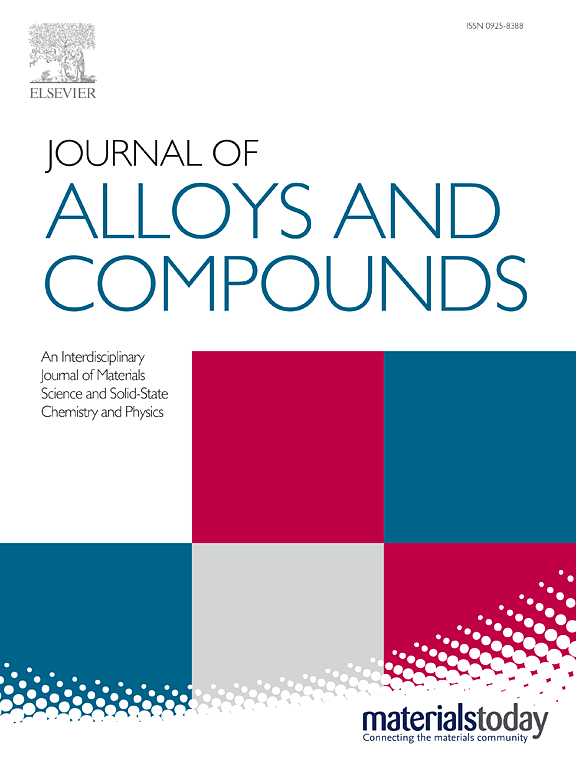含有单斜相夹杂物的ZrO2-Eu2O3四方固溶体的光谱学
IF 5.8
2区 材料科学
Q2 CHEMISTRY, PHYSICAL
引用次数: 0
摘要
研究了96 mol.%ZrO2-4mol的发光光谱特性。研究了% eu2o3固溶体。96 mol.%ZrO2-4mol的x射线和发光光谱数据。% eu2o3四边形晶体及其圆差干涉对比光学图像表明晶体中存在单斜相夹杂物。单斜相O2-→Eu3+电荷转移带的最大值出现在96 mol.%ZrO2-4mol。与纯四方相的相应波段相比,%Eu2O3四方晶体向更长的波长移动。结果表明,Eu2+离子在96 mol。%ZrO2-4mol。含有单斜相夹杂物的%Eu2O3四方晶体优先占据单斜相晶格位。基于本工作的结果,可以提出一种快速检测ZrO2-R2O3固溶体(R = REM)中单斜相夹杂物的光学光谱方法。本文章由计算机程序翻译,如有差异,请以英文原文为准。
Optical spectroscopy of ZrO2-Eu2O3 tetragonal solid solutions with monoclinic phase inclusions
The luminescent spectral properties of 96 mol.%ZrO2-4mol.%Eu2O3solid solutions have been studied. X-ray and luminescent spectral data for the 96 mol.%ZrO2-4mol.%Eu2O3tetragonal crystals and their circular differential interference contrast optical images suggest the presence of monoclinic phase inclusions in the crystals.The maximum of the O2-→Eu3+charge transfer band for the monoclinic phase present in the 96 mol.%ZrO2-4mol.%Eu2O3 tetragonal crystals is shifted towards longer wavelengths compared to the respective band of the pure tetragonal phase.We show that the Eu2+ ions in the 96 mol.%ZrO2-4mol.%Eu2O3 tetragonal crystals with monoclinic phase inclusions preferentially occupy monoclinic phase lattice sites.Based on the results of this work, one can suggest a method for fast detection of monoclinic phase inclusions in ZrO2-R2O3 solid solutions (R = REM) using optical spectroscopy.
求助全文
通过发布文献求助,成功后即可免费获取论文全文。
去求助
来源期刊

Journal of Alloys and Compounds
工程技术-材料科学:综合
CiteScore
11.10
自引率
14.50%
发文量
5146
审稿时长
67 days
期刊介绍:
The Journal of Alloys and Compounds is intended to serve as an international medium for the publication of work on solid materials comprising compounds as well as alloys. Its great strength lies in the diversity of discipline which it encompasses, drawing together results from materials science, solid-state chemistry and physics.
 求助内容:
求助内容: 应助结果提醒方式:
应助结果提醒方式:


